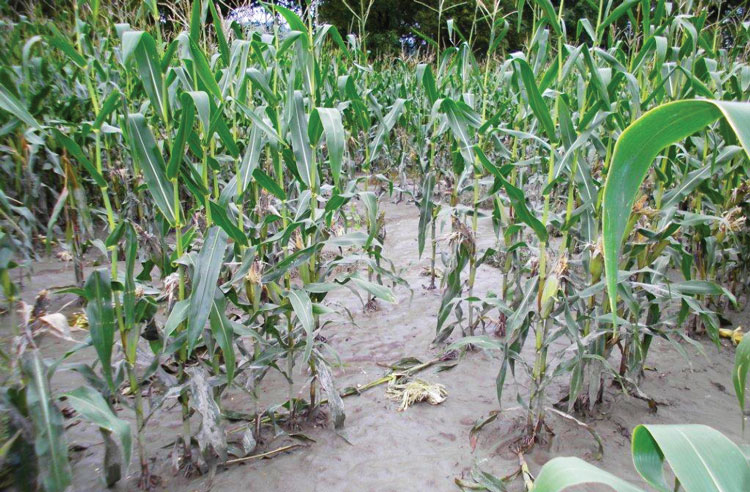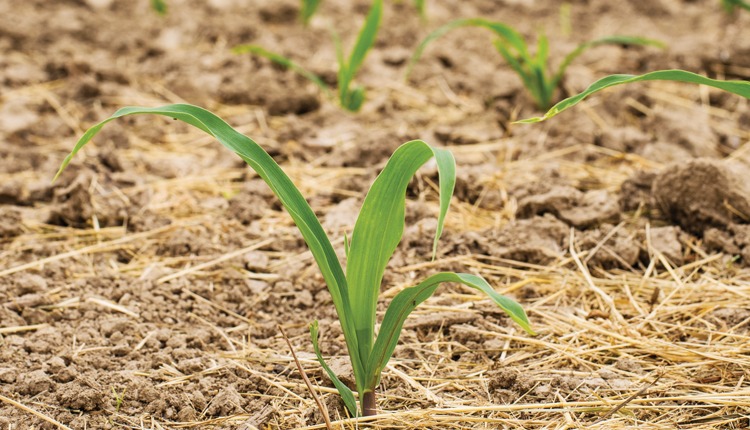Thomas is retired from the William H. Miner Agricultural Research Institute and president of Oak Point Agronomics Ltd.

It’s harvest time — or soon will be — for corn silage in many dairy areas. This column will cover two topics related to making the most of this crop. The first pertains to the flooding that affected cornfields in large areas of the northeastern U.S. this summer. The second topic, which includes a do-it-yourself evaluation for silage processor effectiveness, should be of interest to anyone harvesting corn for silage.
Weather issues
The problems resulting from flooding vary depending on the corn’s stage of growth when it was flooded. Young corn plants can survive flooding for no more than several days, and even if they survive, the root systems may be affected enough to reduce nutrient uptake and raise their susceptibility to drought stress later in the season. Fortunately, the floods occurred when most of the corn was tall enough that plant survival wasn’t a problem since corn plants that are only partly submerged continue to photosynthesize.
Of greater concern is the waterborne silt and other contaminants that may lodge in the whorls of young corn plants and in the leaf axils of taller plants. Rain will help wash debris from exposed leaf surfaces but may not remove any material deposited in the axils.
In August 2011, severe flooding in the Connecticut River Valley submerged some corn under 6 feet of water, resulting in extensive silt deposition, both on the leaf surfaces and in the axils. I was asked to evaluate the situation and advised farmers that this corn wasn’t suitable for silage harvest, but because the husks protected the ear, they may be able to harvest the crop for grain.
There would have been several problems if this corn was chopped for silage. There would be greater wear to chopper knives due to the abrasive effects of the silt and a lack of fermentation bacteria that were washed off by the flood waters. Most importantly, there would be an impact on forage quality due to the contaminants in the silt, including sewage pathogens and unknown chemicals. These are some problems to keep in mind this fall as farmers walk their previously flooded corn fields.
Harvest timing
There is a difference between what’s considered “acceptable” for corn silage maturity and the ideal. We often see a range of recommended dry matter (DM) content for corn silage, starting at 30% DM (and sometimes even 28%). While 30% DM may be acceptable, it’s far from ideal since at this stage of maturity, corn plants are adding on yield — mostly in the form of starch — every day.
My sweet spot for chopping corn is 35% DM, but anything between 33% and 37% DM is okay. That’s a range of 4 percentage points, and since it takes about a week for corn to dry down by 4 points during the fall, that should be enough time for most farmers to get their crop chopped and ensiled.
There used to be concern about hard kernels passing through the cow’s digestive tract, but on today’s dairy farms, most corn chopped for silage has passed though a silage processor. Properly adjusted processor rolls will break at least 95% of the kernels, so a quart of processed corn should contain no more than one whole or two half kernels. The ideal is for each kernel to be broken into several pieces, but sometimes soft-textured corn doesn’t fracture as easily. The objective is to expose the kernel starch to digestion by ruminants.
A good way to judge kernel processor effectiveness is to put a quart of corn silage into a dishpan or pail filled about 3/4 full of water. Stir the material around for about a minute, then remove and discard all the floating material. The kernels, whether whole, broken, or cracked, will be on the bottom of the pan or pail. Carefully pour off the water, and then it will be easy to examine the corn to confirm that a high percentage of the kernels are broken.
A corn silage or kernel processing score (often abbreviated KPS) by a forage testing laboratory is a good measure of processor effectiveness — a score of 70 and above is considered optimum — but the “dishpan/pail test” can be done during harvest so any needed adjustments to processor rolls can be made “on the fly,” so to speak.
All hybrids may not result in the same processor results, particularly those with soft kernel texture, so it may be advisable to repeat this test if there are noticeable changes in kernel texture. The same is true if there are also significant changes in whole plant dry matter.











